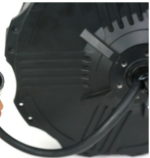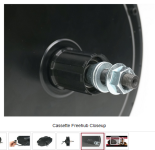ebike4healthandfitness said:
With that mentioned, I noticed Leaf Bike is now claiming the 1500 hub motor comes with 3mm phase wires. Is that true? If it is true how much benefit does that give above 12 guage? Could it be of zero advantage because some other part of the system is a bottleneck long before a set of 12 guage phase wires would be a bottleneck?
That would depend on the motor winding, wouldn't it? Because narrower conductive paths like PCB traces and FET legs are too short to impose much overall resistance.
Bottom line is, Leaf motors are made to order in whatever winding you request, and whichever other motor you want to compare is not. That way, you get to choose how to optimize your system. Or not.





